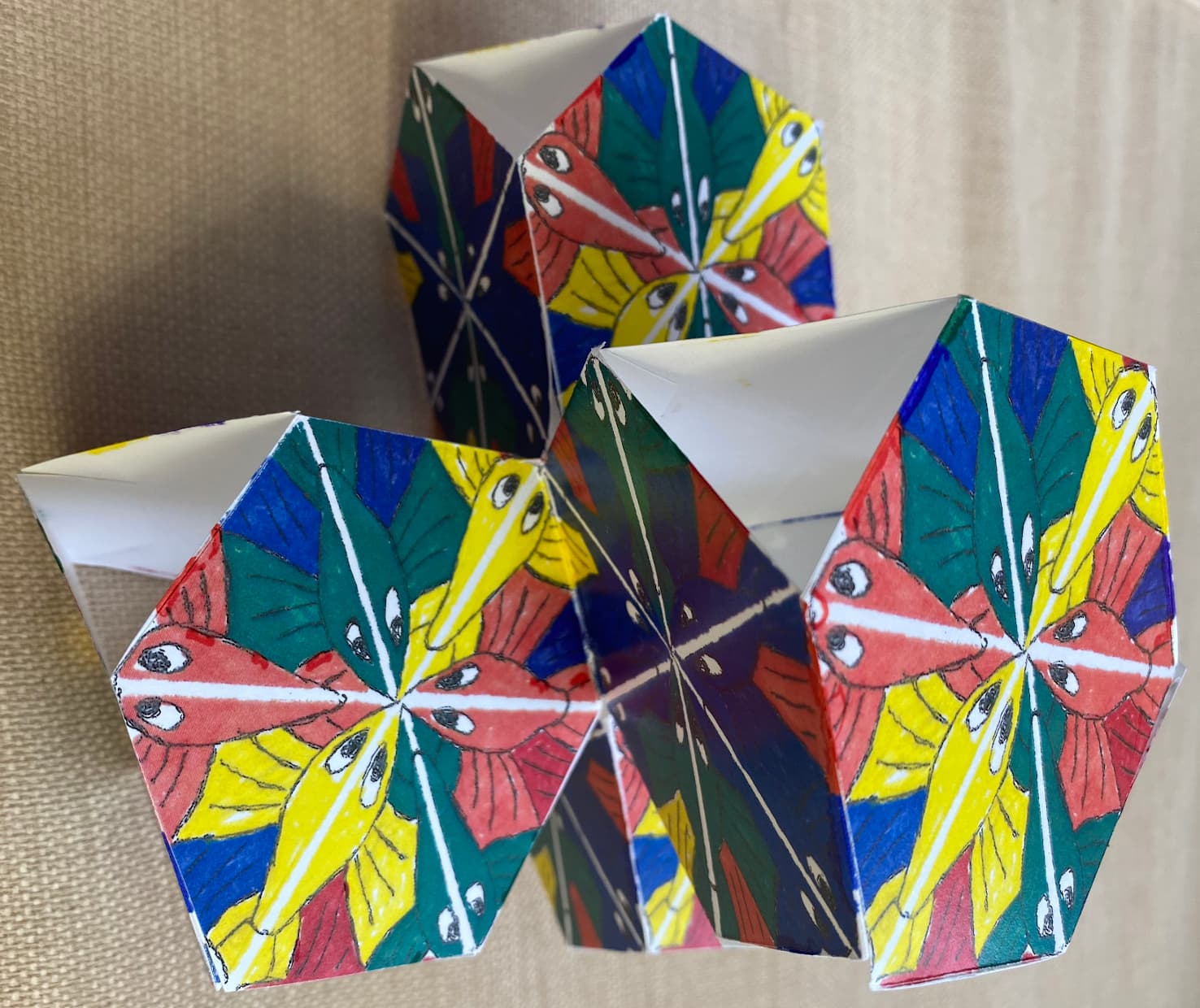2022 Joint Mathematics Meetings
Doug Dunham
Artists
Doug Dunham
Professor Emeritus of Computer Science
Dept. of Computer Science, University of Minnesota Duluth
Duluth, Minnesota, USA
Statement
Our goal is to design aesthetic patterns in the Poincaré hyperbolic circle model or on surfaces of polyhedra. One set of polyhedra that we have considered are triply periodic polyhedra in Euclidean 3-space. The most regular ones are transitive on vertices, edges, and faces, and are often called skew apeirohedra. H.S.M. Coxeter and John Flinders Petrie proved that there are exactly three of these: $\{4,6|4\}$, $\{6,4|4\}$, and $\{6,6|3\}$, where $\{p,q|r\}$ is composed of regular $p$-sided polygons meeting $q$ at a vertex and with regular $r$-sided polygonal holes. We use the $\{6,6|3\}$ for this patterned polyhedron. It is composed of invisible regular tetrahedral "hubs'' connected by "struts'' which are truncated tetrahedra.
Artworks

Fish Pattern on a {6,6|3} Polyhedron
25 x 25 x 25 cm
Printed card stock
2021